-
Recent Posts
- Trump’s “Big Beautiful Bill” Is a Grotesque Giveaway to Fossil Fuel Billionaires While Adding $3.3 Trillion to Nation’s Debt
- Senator Chris Murphy Charges that Trump “Has Opened a Channel for Bribery”
- Congressman Casten: Trump’s Assault on the Rule of Law Is Causing Capital Flight Out of U.S. by Foreign Investors
- Trump’s Approval Rating Drops to 80-Year Low; IMF Says U.S. Tariffs Now Exceed the Highs During the Great Depression
- Nasdaq Has Lost More than 3,000 Points Since Trump’s First Full Day in Office in 2025; the Pain Has Barely Begun
- The Bond Crisis Last Week Was a Global No-Confidence Vote in U. S. President Donald Trump
- Trump’s Tariff Plan Guts $5 Trillion in Stock Value in Two Days; Senator Warren Calls for Emergency Action Before Markets Open on Monday
- Trump’s Attacks on Big Law, Universities, and the Media Have a Common Goal: Silence Dissent Against Authoritarian Rule
- Trump Administration Gives All Clear to Laundering Money through Shell Companies and Bribing Foreign Officials
- Four Megabanks on Wall Street Hold $3.2 Trillion in Uninsured Deposits – Which May Explain Senator Schumer’s Pivot to the GOP to Stop a Government Shutdown
- Here’s What Came Crashing Down Yesterday for Trump’s “Genius” Guy, Elon Musk: Tesla Stock, Access to Twitter (X), His Years of Secret Calls with Putin
- After Banning the Associated Press, Trump Is Now Targeting Specific Journalists That He Wants to See Fired
- Closely Watched Atlanta Fed Model Predicts Negative U.S. Growth in First Quarter
- Trump’s Gangster Diplomacy Makes Front Page Headlines Around the Globe
- Who Benefits Alongside Elon Musk If He Succeeds in Killing the CFPB: the Megabanks on Wall Street that Underwrite His Tesla Stock Offerings
- In Trump 1.0, the State Department Used Taxpayer Money to Publish a Book Elevating Elon Musk to a Superhero; It Was Funded by USAID, the Agency Musk Wants to Quickly Shut Down
- News Host Joy Reid Raises Threat of Trump Selling U.S. to Putin; Ten Days Later Her Show Is Cancelled
- Elon Musk’s DOGE Appears to Be Violating a Court Order; It Has Taken Down Hundreds of YouTube Videos that Educate Americans on How to Avoid Being Swindled
- Barron’s Releases Audio of Jamie Dimon Cursing Out His Workers at a Town Hall, as Dimon Plans to Dump Another One Million JPM Shares
- There’s One Federal Investigative Agency that Neither Trump nor Elon Musk Can Touch: It Just Opened an Investigation into DOGE
- Elon Musk’s Companies Were Under Investigation by Five Inspectors General When the Trump Administration Fired Them and Made Musk the Investigator
- Donald Trump Gives the Greenlight to Goldman Sachs and JPMorgan Chase to Return to Bribing Foreign Officials
- After Tech Geeks Built a Back Door to Loot Billions from FTX, Republicans Refuse to Investigate What Elon Musk’s Tech-Squad Did Inside the U.S. Treasury’s Payment System
- Former Prosecutor, Now U.S. Senator, Informs Tesla That CEO Musk May Be Violating Federal Law and to “Preserve All Records”
- Trump’s Hedge Fund Guy Is Now Overseeing the U.S. Treasury, IRS, OCC, U.S. Mint, FinCEN, F-SOC, and the Consumer Financial Protection Bureau
- As Elon Musk Begins Shutting Down Payments to Federal Contractors, a Strange Money Trail Emerges to His Operatives Inside the U.S. Treasury’s Payment System
- JPMorgan Chase Charged by Yet Another Internal Whistleblower with Cooking the Books
- We Asked Google’s AI Search Model, Gemini, Questions About the Fed and Wall Street Megabanks: It Got the Answers Dead Wrong
- With Trump and Melania’s Crypto Coins Likely to Raise Legal Challenges, Why Didn’t Trump Fire the SEC’s Inspector General in His Purge of IGs?
- Fossil Fuel Industry Could End Up Paying Tens of Billions for LA Wildfires and Deceiving the Public on Climate Change for Decades
- It’s Being Called the Biggest Grift by a President in U.S. History: Trump and First Lady Launch their Own Crypto Coins
- Trump Plans to Install a Fracking CEO to Head the Energy Department and Declare a National Emergency on Energy to Gain Vast Powers
- Fossil Fuel Money Played a Role in the Los Angeles Fires and the Push to Install Pete Hegseth as Secretary of Defense
- When It Comes to Wealth Retention in Retirement, Concrete May Be the New Gold
- Wall Street Watchdog Warns “Clock Is Ticking on a Coming Catastrophic Financial Crash”
- Wall Street Is Sending the Same Message to Americans on Fossil Fuel Financing that It Sent on Cigarettes: Drop Dead
- In a Six-Week Span, this Dark Pool with a Curious Past Traded 3.7 Billion Shares
- Wall Street’s Lobby Firm Hired Eugene Scalia of Gibson Dunn to Sue the Fed for Jamie Dimon
- Postmaster General Louis DeJoy Made $561,051 in Compensation in 2024, as Mail Costs Spiked and Delivery Deteriorated
- Fed Chair Jay Powell Sends a Bold Message to Trump and Tanks the Dow by 1123 Points
- The Head of Fixed Income at T. Rowe Price Makes the Scary Case for the 10-Year Treasury to Spike to 6 Percent
- $663 Billion in Cash Assets Have Gone Poof at the Largest U.S. Banks
- Donald Trump to Ring Bell at New York Stock Exchange Today as Hit List Posters Appear in Manhattan Targeting Wall Street CEOs
- Trump Has a Slush Fund to Prop Up the Dollar – Will He Use It to Prop Up Bitcoin Instead?
- A CEO Assassination; a Billionaire Heiress/NYPD Commissioner; a Secret Wall Street Spy Center – Here’s How They’re Connected
- Despite More than 1600 Tech Scientists Signing a Letter Calling Crypto a Sham, Trump Names a Crypto Cheerleader for SEC Chair
- The Fed Rings a Warning Bell: Hedge Funds and Life Insurers Are Reporting Historic Leverage
- Trump’s Nominee for FBI Director, Kash Patel, Has Businesses Financially Intertwined with Trump
- Donald Trump Is at Risk of Getting Named in a Fossil Fuels Conspiracy Lawsuit
- Trump Is Having Difficulty Getting a Lawyer to Accept the Nomination for SEC Chair: Here’s Why
Search Results for: Federal Reserve
3-Count Felon, JPMorgan Chase, Caught Laundering More Dirty Money
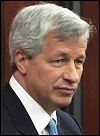
By Pam Martens and Russ Martens: September 21, 2020 ~ The International Consortium of Investigative Journalists (ICIJ) has once again managed to do what federal bank regulators refuse to do in the United States – come clean with the American people about our dirty Wall Street banks. ICIJ dropped a bombshell investigative report yesterday about money laundering for criminals at some of the biggest banks on Wall Street, but you won’t find a peep about it on the front page of today’s Wall Street Journal or New York Times’ print editions. In fact, the New York Times, as of 6:44 a.m. this morning, hasn’t reported the story at all. The Wall Street Journal carries an innocuous headline, “HSBC Stock Hits 25-Year Low,” putting the focus on the British bank, HSBC, when its focus should be on the largest bank in the U.S., JPMorgan Chase, a serial felon. JPMorgan Chase has … Continue reading
The Fed Announces New Bank Stress Tests: Will Look at What Would Happen if a Major Counterparty Defaulted

By Pam Martens and Russ Martens: September 17, 2020 ~ At the time the Fed released the results of its bank stress tests in June, it announced that because of the pandemic and unprecedented economic downturn, it would require additional stress testing of the biggest banks later this year. This afternoon, the Fed released those plans. Among the various hypothetical scenarios that the banks will have to perform against, 13 of the banks with significant trading operations will have to consider what would happen if a major counterparty blew up. The banks that will have to submit outcomes under this scenario include: Bank of America, Bank of New York Mellon, Barclays US, Citigroup, Credit Suisse, Deutsche Bank USA, Goldman Sachs, HSBC, JPMorgan Chase, Morgan Stanley, State Street, UBS, and Wells Fargo. The Fed will release bank-specific results before the end of the year. All 34 banks will face two hypothetical … Continue reading
QAnon Joins Hits to Citigroup’s Brand: Dr. Evil Trade; Parmalat “Black Hole”; Enron; SIV Liquidity Puts; and Dracula Stock Options

By Pam Martens and Russ Martens: September 15, 2020 ~ The business media was abuzz yesterday with reports that two of Citigroup’s federal regulators – the Office of the Comptroller of the Currency and the Federal Reserve – are considering reprimanding the bank for failure to improve its risk management systems. Trust us: there is a lot more to this story than you’re reading about in the main stream press. Citigroup doesn’t do anything small. When it does something bad, it goes all in – sometimes even assigning a code name. Let’s start with the “Dr. Evil” trade. That was actually the code name that Citigroup traders assigned to an attempt to exploit a weakness in a European bond trading system. Citigroup was fined $26 million in 2005 by Europe’s Financial Services Authority for the trades. Citigroup employees gave another code name, “Buca Nero” – Italian for “Black Hole” – … Continue reading
Handed the Reins During Financial Crises: Obama – First Black President, 2009; Jane Fraser – First Female CEO of a Mega Wall Street Bank, Citigroup, 2021

By Pam Martens: September 10, 2020 ~ Leave it to those good ole white men of wealth and privilege to know when to cut and run. President George W. Bush and his Treasury Secretary, Hank Paulson, (former CEO of Goldman Sachs) handed the smoldering ruins of the U.S. economy to the first Black president in the history of the U.S., Barack Obama, on January 20, 2009. That was right in the midst of the Great Financial Crisis and just four months after some of the most iconic names on Wall Street had either collapsed or were forced into shot-gun marriages. We wrote the following in May 2008 during the runup to the election: “Wall Street, known variously as a barren wasteland for diversity or the last plantation in America, has defied courts and the Equal Employment Opportunity Commission (EEOC) for decades in its failure to hire blacks as stockbrokers. Now … Continue reading
The Fed Has Loaned $1.2 Billion from its TALF Bailout Program to a Tiny Company with Four Employees
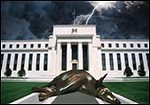
By Pam Martens and Russ Martens: September 10, 2020 ~ This article was updated at 3:40 p.m. today. See Editor’s note below. ~ Every Wall Street bailout program that the Fed has created since September 17 of last year has, according to the Fed, been ostensibly created to somehow help the average American. According to the Fed’s Term Sheet for the Term Asset-Backed Securities Loan Facility (TALF), it’s going to “help meet the credit needs of consumers and businesses by facilitating the issuance of asset-backed securities.” Not to put too fine a point on it, but asset-backed securities and related derivatives are what blew up Wall Street in 2008, creating the worst economic downturn, at that point, since the Great Depression. According to the Fed’s TALF transaction data, it has made $2.6 billion in total loans. Forty-six percent of that money, $1.2 billion, went to a company that has 4 … Continue reading
The Fed Does Not Ride to the Rescue of Wall Street Yesterday: What’s Up?
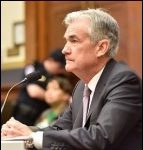
By Pam Martens and Russ Martens: September 9, 2020 ~ The Dow Jones Industrial Average closed with a loss of 632 points yesterday (a 2.25 percent decline) while the Nasdaq erased 465 points for a loss of 4.11 percent. As Wall Street witnessed its most vicious correction since March over the past three consecutive trading sessions, a curious thing happened at the Fed. The Fed’s repo loan money spigot which had churned out more than $9 trillion cumulatively to the trading houses of Wall Street from the inception of the bailout program on September 17, 2019 to our tally in mid-March of this year, pumped out nary a drop of cold cash in repo loans as the market swooned. Big zeros in loans provided by the Fed populated their data sheets on all three days of the selloff. However, to comfort Wall Street with the knowledge that the Fed is … Continue reading
The Fed Provides an Unlimited Money Lifeline to Wall Street; 30 Million Americans Facing Eviction Get a No-Money 4-Month Plan
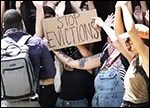
By Pam Martens and Russ Martens: September 3, 2020 ~ Happy New Year – here’s your eviction notice. That’s how tens of millions of struggling Americans have been set up to fail as the one percent on Wall Street, propped up by unlimited money from the Fed, ring in the New Year with Tiffany flutes of Dom Perignon in their Greenwich mansions. According to a recent study published by The Aspen Institute, 30 to 40 million Americans will be at risk of eviction over the next several months. The Centers for Disease Control and Prevention (CDC) has been dragged into the eviction morass because Democrats and Republicans in Congress cannot find common ground on a meaningful plan. On Tuesday, the CDC issued an order that bans landlords from evicting tenants that cannot afford to pay rent due to a pandemic-related job loss or income reduction. The CDC action follows an … Continue reading
Wall Street’s Felon Banks to Go Live with their Own Stock Exchange this Month
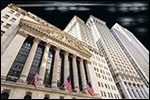
By Pam Martens and Russ Martens: September 2, 2020 ~ Members Exchange (MEMX), a brand new stock exchange, has announced that it will begin live trading of select stocks for the first time on September 21 with a full phase-in on September 29. Criminal histories are, apparently, no barrier to running a stock exchange in the United States to the deeply conflicted way of thinking of the Securities and Exchange Commission (SEC), which issued its approval to operate the exchange on May 5. Investors in the new stock exchange are some of the most serially-charged Wall Street banks, including JPMorgan, Goldman Sachs, and UBS, along with the hedge fund, Citadel Securities. BlackRock, which is up to its neck in the Federal Reserve’s deeply conflicted bailout programs, is also an investor, as is the high-frequency trading firm, Virtu Financial, and others. JPMorgan Chase has been criminally investigated by the U.S. Department … Continue reading
As Retirees Anguish Over a Sub One-Percent Treasury Note, U.S. Companies Are Suspending their Dividends at a Rate Not Seen Since the 2008 Crash
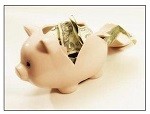
By Pam Martens and Russ Martens: August 28, 2020 ~ Thanks to the behemoth banks on Wall Street that engineered the largest Inside Job in the history of global banking and cratered the economy in 2008, retirees are now looking at a yield of 0.75 percent on a 10-year U.S. Treasury note. That paltry yield compares to the 4 percent or higher that retirees have been able to get throughout much of the last century on a T-Note. The Federal Reserve is directly responsible for these unprecedented low yields. For much of the past 12 years, the Fed has been manipulating interest rates lower by buying up trillions of dollars in bonds (quantitative easing) in order to avoid crashing the Wall Street banks. The Wall Street banks are holding tens of trillions of dollars in interest-rate derivative bets — betting that rates won’t rise substantially or will drift lower. So … Continue reading
An Unprecedented 1,640 CEOs Departed in 2019; Now Execs Are Dumping Stock at Highest Pace Since 2006

By Pam Martens and Russ Martens: August 27, 2020 ~ A rather fascinating picture is emerging that suggests that things were not as rosy in the U.S. economic landscape prior to the pandemic as President Donald Trump and his Director of the National Economic Council, Larry Kudlow, would have the public believe. Challenger, Gray & Christmas, Inc. has been tracking CEO departures for the past 12 years. Its Vice President, Andrew Challenger, called the numbers for 2019 “staggering.” It was the highest number since their surveys began in 2002. A total of 1,640 CEOs headed for the exits last year. That was 156 more CEOs than those who left their post in 2008 – the year that Wall Street blazed a scorched earth trail through the U.S. economy. The number of CEOs that did not leave on their own accord last year was 101 out of the 1,640. According to … Continue reading

